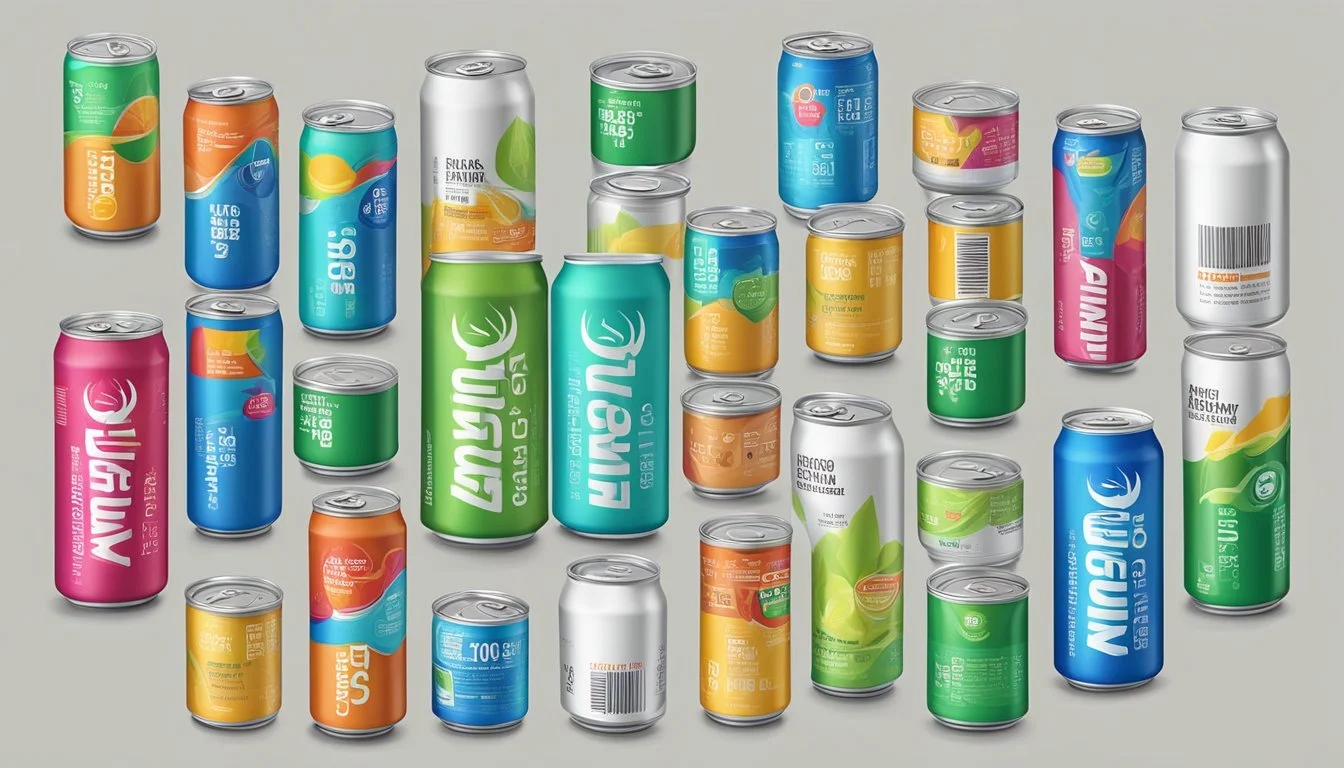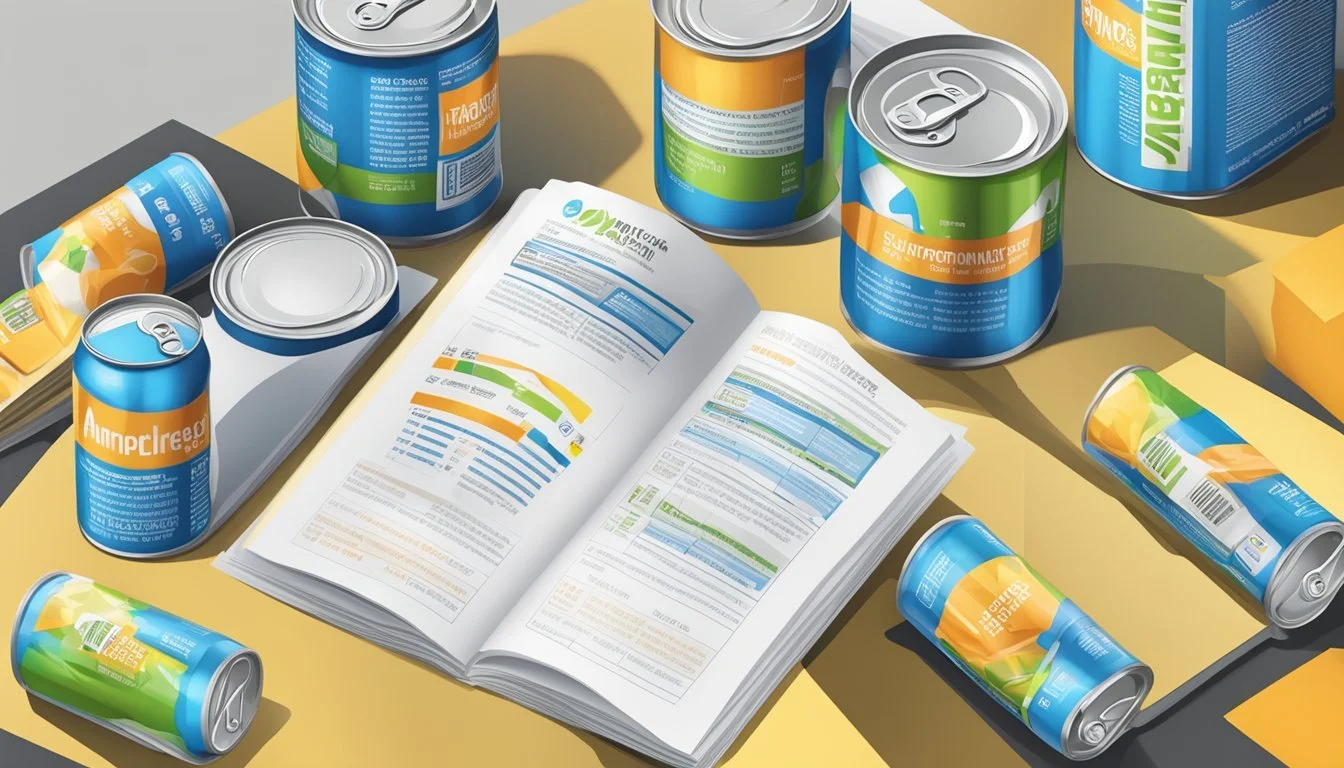How Many Servings of Amino Energy Drink is Too Much
Expert Guidelines
Figuring out the right amount of Amino Energy drink to consume can be a challenge, especially with mixed messages about caffeine and amino acid intake. Most often, the concern is about too much caffeine, which could lead to side effects such as jitteriness, headaches, and heart palpitations. Generally, it is recommended that individuals do not exceed four servings of Amino Energy drink per day, considering that one serving contains 100mg of caffeine.
As the popularity of energy drinks rises, understanding the balance between benefits and potential risks is crucial. Each 12 fl. oz. can of Amino Energy contains 5 grams of amino acids and 100mg of caffeine, placing it within a moderate range compared to other energy drinks. Regular consumption demands caution, especially for those who consume caffeine from multiple sources.
It's important to be aware of how much you consume not just in terms of servings, but also in combination with other dietary sources of caffeine. This awareness can help prevent common issues such as gastrointestinal discomfort and more serious concerns like caffeine overdose. Paying close attention to the entire daily intake can help maintain a healthy balance and avoid overconsumption.
Understanding Amino Energy Drinks
Amino energy drinks combine amino acids, caffeine, and other ingredients to boost energy and improve performance. These drinks usually include a variety of amino acids, vitamins, and minerals important for bodily functions.
Composition and Key Ingredients
Amino energy drinks often contain 100mg of caffeine per serving, sourced from green tea and green coffee extracts. They feature a blend of amino acids like L-Threonine, L-Leucine, L-Citrulline, L-Theanine, Sustamine L-Alanyl, L-Glutamine, Micronized Taurine, and L-Lysine Hydrochloride.
The drinks typically have 5 calories per 12 fl. oz can. Key vitamins and minerals, such as sodium (15mg), are present but in minimal amounts. Sugar content is generally low, making them suitable for various dietary preferences.
The Role of Amino Acids in Energy Drinks
Amino acids in these drinks serve as building blocks for proteins, aiding muscle repair and growth. Essential amino acids like leucine, isoleucine, and valine (BCAAs) are included for their muscle-supporting properties.
Taurine and citrulline support optimal hydration and blood flow, enhancing overall performance. Each amino acid has specific roles, such as arginine, which helps with nitric oxide production, potentially improving circulation.
Comparing Amino Energy with Other Energy Drinks
When compared to other energy drinks like Red Bull, Amino Energy has a different focus on ingredients. Both drinks provide caffeine, energy, and alertness but Amino Energy uses a more complex blend of amino acids.
Red Bull contains 80mg of caffeine per 8.4 fl. oz. This is slightly more concentrated per ounce than Amino Energy, which has 100mg per 12 fl. oz. Additionally, Red Bull often includes sugars and B vitamins, while Amino Energy emphasizes a broader spectrum of amino acids and minimal electrolytes.
In summary, amino energy drinks are composed of varied beneficial ingredients aimed at enhancing energy, performance, and muscle recovery.
Health and Safety Considerations
When considering how many servings of amino energy drinks are too much, it's crucial to examine the caffeine content, potential side effects of excessive consumption, and any possible interactions with medication or medical conditions.
Caffeine Content and Safe Limits
Amino energy drinks typically contain 100-200 mg of caffeine per serving. The FDA recommends a maximum of 400 mg of caffeine per day for most adults. Exceeding this limit can lead to caffeine overdose, with symptoms such as headaches, insomnia, and increased heart rate.
People sensitive to caffeine or those with certain health conditions may need to consume less. The American Academy of Pediatrics advises that adolescents consume no more than 100 mg of caffeine daily. Monitoring the exact caffeine content in each serving and staying within these limits is essential.
Potential Side Effects of Excessive Consumption
Consuming too many amino energy drinks can cause serious health issues. Common side effects include anxiety, nausea, and diarrhea.
High caffeine intake may also elevate blood pressure, leading to long-term cardiovascular problems. For some, excessive caffeine may cause kidney stress, while others might experience digestive issues like stomach cramps. It's critical to recognize these potential side effects and adjust consumption accordingly to avoid severe health consequences.
Interactions with Medication and Medical Conditions
Amino energy drinks can interact with various medications. Caffeine can interfere with drugs that affect heart rate and blood pressure. For people on medication for anxiety or depression, excessive caffeine can exacerbate symptoms.
Those with preexisting medical conditions like diabetes, hypertension, or kidney disease should be particularly cautious. It's always advisable to consult a healthcare professional before integrating amino energy drinks into a daily routine. Proper guidance can help mitigate risks and ensure safe consumption levels tailored to individual health needs.
Nutritional Impact
Amino Energy Drink can significantly influence daily nutrition by contributing calories and providing essential nutrients like amino acids and proteins which are vital for muscle recovery and overall health.
Energy Contribution and Caloric Content
Each serving of Amino Energy contains approximately 5-10 calories, making it a low-calorie option suitable for those monitoring intake. The energy boost primarily comes from 100mg of caffeine per serving.
This is about a quarter of the daily recommended limit of 400mg set by the FDA. Sugar content in these drinks is minimal, further supporting its role in low-calorie diets. The effect on energy levels without excessive calorie addition makes it an attractive energy supplement.
Proteins, Amino Acids, and Muscle Recovery
Amino Energy Drink provides essential amino acids like BCAAs (Branched-Chain Amino Acids), which are crucial for reducing muscle breakdown and promoting muscle recovery after workouts.
Proteins and amino acids are foundational for muscle repair processes. The inclusion of BCAAs supports decreased muscle soreness and enhanced recovery rates. Regular consumption can therefore be beneficial for those engaged in intensive physical activity or looking to improve muscle recovery. The balance of these nutrients helps maintain muscle mass and supports a robust, efficient recovery mechanism.
Benefits and Performance Enhancement
Amino energy drinks offer a variety of benefits that can aid in physical performance and mental focus. Key areas where they excel include enhancing physical endurance and improving cognitive function.
Physical Performance and Endurance
Amino energy drinks are designed to support physical performance. They contain essential amino acids that can aid in muscle recovery and reduce fatigue. Branched-Chain Amino Acids (BCAAs), such as leucine, isoleucine, and valine, are vital for muscle protein synthesis. This helps maintain muscle mass during intense workouts.
The 100 mg of caffeine in each serving provides a boost of energy similar to a cup of coffee. Caffeine stimulates the central nervous system, which can lead to improved endurance and physical stamina. Athletes often find they can exercise longer and at higher intensities when they consume amino energy drinks.
Some amino energy drinks also contain electrolytes to help prevent dehydration during prolonged physical activity. Hydration is crucial for maintaining endurance and performance, as even mild dehydration can hamper athletic abilities.
Mental Focus and Brain Function
Amino energy drinks are not just for physical performance; they also enhance mental focus and cognitive function. The caffeine content works wonders for improving concentration and alertness. After ingestion, caffeine blocks adenosine receptors in the brain, leading to increased dopamine production and sharper mental focus.
Tyrosine, another common ingredient, supports brain function by aiding in the production of neurotransmitters like dopamine and norepinephrine. These neurotransmitters play significant roles in mood regulation and cognitive performance.
Ingredients like choline and B vitamins further contribute to improved brain function. Choline is essential for neurotransmitter synthesis, while B vitamins assist in energy production and neuroprotective functions. This combination ensures that users can maintain mental clarity and focus during both physical and mental tasks.
Lifestyle and Consumption Patterns
Amino Energy drinks can fit into various lifestyles and consumption patterns, providing benefits for those with specific dietary needs and physical activities.
Suitability for Different Diets
Amino Energy drinks are low in calories, sugar, and carbohydrates, making them suitable for diets that focus on low-calorie or low-carb intake. Each serving typically contains 5 calories and 1-3 grams of carbohydrates, integrating well into keto and other low-carb diets.
For individuals on a high-protein diet, these drinks offer around 5 grams of protein per serving, primarily derived from amino acids like L-Threonine and L-Leucine.
This makes them a useful supplement for those who are focused on muscle recovery and growth. Because they contain no fat, they can be consumed by those looking to reduce unnecessary fat intake.
Relevance for Athletes and Active Individuals
Amino Energy drinks are particularly beneficial for athletes and active individuals due to their caffeine and amino acid content. Each 12 fl. oz can provides 100 mg of caffeine, which can enhance alertness and performance during workouts.
The blend of amino acids, including L-Glutamine and Micronized Taurine, supports muscle repair and reduces recovery time post-exercise. This is crucial for those engaged in intense training activities.
Furthermore, the drinks contain electrolytes, which help maintain hydration levels, a key factor for endurance athletes and those participating in long-duration physical activities. The convenient packaging and quick energy boost make it a practical choice for pre-workout or during training sessions.
Market and Consumer Information
Optimum Nutrition's Essential Amino Energy is a popular choice among fitness enthusiasts. Understanding the product variants and flavors, and their pricing and availability, can help consumers make informed decisions about their purchases.
Product Variants and Flavors
Essential Amino Energy comes in various forms and sizes, designed to suit different consumer needs. These include powder and ready-to-drink versions. The powder is available in several weights: 190 g, 270 g, and 585 g.
Flavors are another key offering of this product. Popular options include fruit punch, blue raspberry, and watermelon. Each flavor aims to enhance the user experience by providing both taste and functional benefits.
Optimum Nutrition focuses on delivering a product that can cater to diverse tastes and preferences. This variety helps in attracting a broad consumer base, from casual gym-goers to serious athletes.
Pricing and Availability
The price of Essential Amino Energy varies based on the size of the package and the vendor. For instance, smaller containers are generally more affordable, making them a good option for those new to the product or seeking a budget-friendly alternative.
Consumers can find Essential Amino Energy both online and in physical retail stores. Major online retailers like Amazon and health supplement websites often offer discounts and bundles.
Availability in physical stores like GNC and Vitamin Shoppe ensures that customers have easy access to the product. Such widespread availability helps Optimum Nutrition maintain its strong market presence and meet consumer demand efficiently.
Shoppers should note that prices may vary based on location, sales, and promotions. Comparing prices across different platforms can ensure they get the best deal.
Regulatory Framework and Recommendations
Consumption of amino energy drinks should be informed by regulatory frameworks and expert recommendations. These guidelines help ensure safety by defining acceptable daily limits and providing professional advice on usage.
FDA Guidelines and Daily Allowance
The FDA sets regulations for caffeine content in beverages to safeguard public health. Energy drinks, including amino energy drinks, typically fall under this regulation. The FDA suggests a daily caffeine limit of 400 mg for most adults, equivalent to 4-5 cups of coffee.
Caffeine content in amino energy drinks varies by brand. For example, a standard serving of many popular brands can contain anywhere from 100 to 200 mg of caffeine. Therefore, depending on the caffeine concentration, consuming more than 2-4 servings daily might exceed the recommended limit. It’s essential to check the specific caffeine content per serving listed on the product labeling to avoid exceeding safe consumption levels.
Professional and Institutional Advice
Experts such as sports cardiologists and institutions like the American Academy of Pediatrics provide valuable insights into the safe use of amino energy drinks. Sports cardiologists often advise athletes to monitor their caffeine intake to avoid adverse cardiovascular effects such as increased heart rate and blood pressure.
The American Academy of Pediatrics specifically advises against the use of caffeinated energy drinks by children and adolescents due to their increased sensitivity to caffeine. They recommend alternative, caffeine-free hydration options for young athletes and students.
Professional advice from nutritionists highlights the importance of considering total daily caffeine intake from all sources, not just energy drinks. Such guidance is crucial to avoid potential negative effects from cumulative caffeine consumption.









